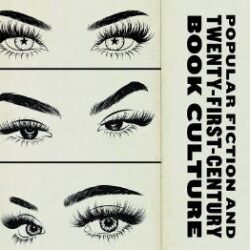Since Jane Austen’s publication of Sense and Sensibility in the 19th century, we’ve moved on from empire waist gowns, empire itself, and of course, industrial capitalism. And with these social, political, and economic changes, modes and practices of readership have also evolved in tandem with our contemporary platformed based economy. Reading itself has been transformed by these structural economic conditions. We are now reading within the landscape of surveillance capitalism, or as Susanna Sacks and Sarah Brouillette have phrased it, reading with, aside, and against algorithms (2023), a dynamic visibly captured via the rise of the reader-aesthetic.
Tag: popular culture
Kim Wilkins, Beth Driscoll, and Lisa Fletcher. Genre Worlds: Popular Fiction and Twenty-First-Century Book Culture.
In 2017, I reviewed Jeremy Rosen’s exploration of genre and late 20th/21st century publishing in Minor Characters Have Their Day for SHARP News. So it seems only fitting that 5 years later I have the opportunity to review Genre Worlds: Popular Fiction and Twenty-First-Century Book Culture by Kim Wilkins, Beth Driscoll, and Lisa Fletcher. Genre Worlds is a more expansive examination of genre in popular fiction than the work of Rosen and many others, and provides an important framework for the study of genre fiction. Genre Worlds follows an organizational structure that addresses the theory of genre worlds, relationship to the publishing industry, transnational and transmedia genre worlds, community and creativity, genre sociality (online and in-person), the texts themselves, concluding with genre worlds and change.
Performing Romance: BookTok and Teen Reading
BookTok, a corner of TikTok largely dominated by young women that is dedicated to reviewing, recommending, and reacting to a wide range of texts, is a driving force for book publishing and marketing. BookTok has become one of the “commanding forces in adult fiction,” helping “authors sell 20 million printed books in 2021” and increasing sales an additional 50 percent in 2022.”[1] BookTokers define not only what books should be read, but how they might be properly experienced and valued, and invite questions both literary and sociological: what forms and language do BookToks rely on? What do BookTok creators value in novel reading? How do BookTokers perform the experience of reading?
Under Your Skin: A History of the Necronomicon and Skin-Bound Books
The absence of evil books in real life hasn’t stopped us from imagining them in all manner of genres both past and present. And we love a good evil book, don’t we? Whether it’s Mister Babadook demanding entry into your home, the King in Yellow bringing carnage and ruin to the stage, or the Spirit grimoire manipulating a young magician in The Care Bears Movie, our fascination with malevolent tomes and nefarious publications continues to thrive. One of the more popular, if not the most popular, versions of this trope is the Necronomicon, a book as notorious as it is fictitious.
Pentiment: An Interview with Josh Sawyer
Pentiment (Obsidian 2022, $19.99, Xbox and Steam), the new narrative game from Obsidian, is a piece of media that gets…



